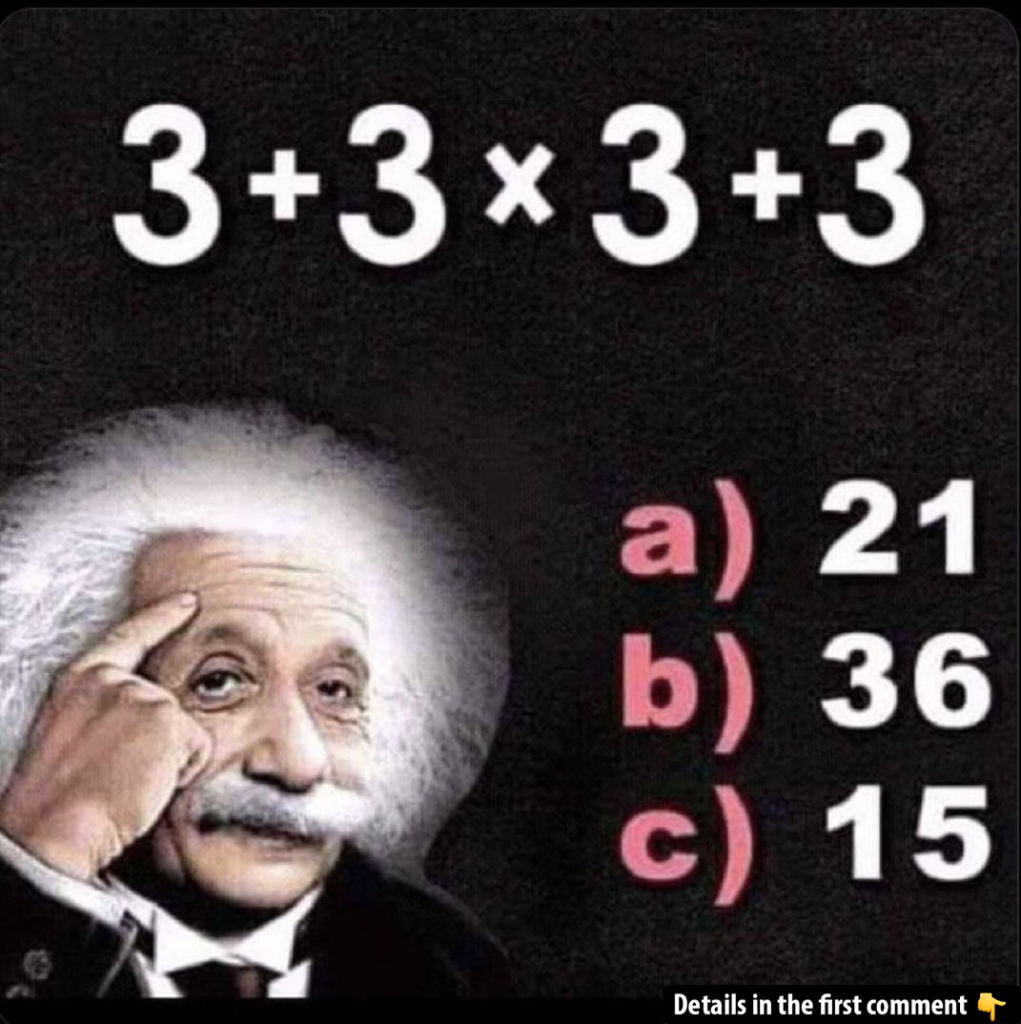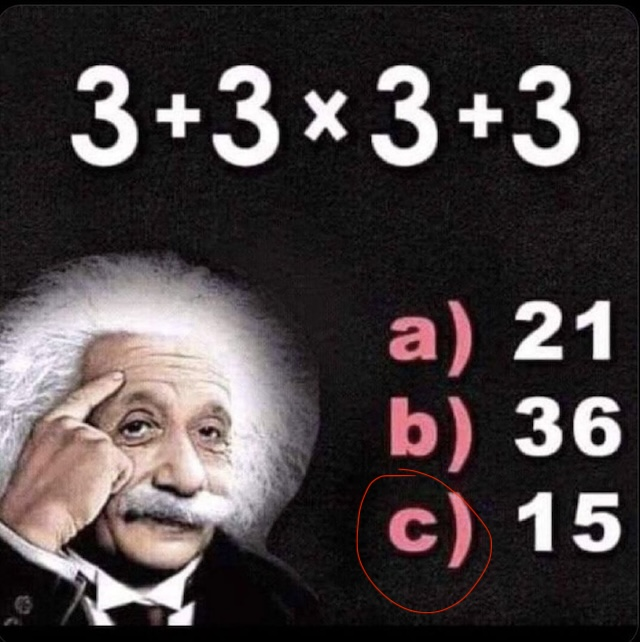Here’s a little challenge to test your math skills: 3 + 3 × 3 + 3. At first glance, it seems like a simple calculation. But the truth is, many people get it wrong on their first try. Why? It all comes down to applying the right order of operations.
Think you’ve got it figured out already? Hold that thought! Let’s break down the equation step by step to see if your answer is correct.

Why Simple Math Problems Can Be Tricky
You’d be surprised how often people stumble over math problems like this one. The mistake usually comes from not following the order of operations correctly. It’s easy to assume that you should just move from left to right, but math doesn’t quite work that way.
The key to solving this problem lies in remembering the PEMDAS rule—a fundamental concept in math. If you’re not familiar with it, don’t worry. We’ll break it down for you!
Understanding PEMDAS: The Golden Rule of Math
PEMDAS is an acronym that helps you remember the order in which mathematical operations should be performed. It stands for:
- Parentheses
- Exponents
- Multiplication and Division (from left to right)
- Addition and Subtraction (from left to right)
The mistake most people make is performing the operations from left to right without considering this hierarchy. Multiplication and division come before addition and subtraction. That’s the rule you must follow to get the correct answer.
Video: Can You Solve The Four 9s Puzzle?
Common Mistakes That Lead to the Wrong Answer
Many people look at the problem 3 + 3 × 3 + 3 and immediately start adding from left to right. They think:
- 3 + 3 = 6
- 6 × 3 = 18
- 18 + 3 = 21
Oops! That’s not right. If you approached it this way, you’re not alone. The problem is that this method ignores the order of operations, which leads to the incorrect result.
Breaking Down the Correct Solution
Now that you know the common mistake, let’s approach the problem correctly using PEMDAS.
- Identify the multiplication first:
According to PEMDAS, we must handle multiplication before addition. The equation is:
3 + 3 × 3 + 3 - Perform the multiplication:
Multiply 3 × 3 = 9 Now the equation becomes:
3 + 9 + 3 - Perform the addition from left to right:
- First, add 3 + 9 = 12
- Then, add 12 + 3 = 15
The correct answer is 15!

Why Following PEMDAS Matters
You might wonder why the order of operations is such a big deal. After all, math should be straightforward, right? The problem is that without a consistent rule like PEMDAS, math equations would be open to interpretation, leading to different answers for the same problem.
Imagine a world where everyone could approach a math problem differently. It would cause chaos in engineering, finance, and everyday life. PEMDAS standardizes how we solve equations, ensuring that everyone arrives at the same correct answer.
Why This Puzzle Is So Popular
Math puzzles like this one go viral because they seem deceptively simple. You look at it and think, “Of course, I know how to add and multiply!” But when the answer turns out to be different from what you expected, it challenges your assumptions.
It’s not just about getting the right answer—it’s about thinking critically and not taking shortcuts. That’s why puzzles like these are great for keeping your brain sharp and improving problem-solving skills.
How to Avoid Making the Same Mistake Again
Next time you encounter a similar problem, remember these key tips:
- Always look for multiplication and division first, even if they’re not at the beginning of the equation.
- Perform addition and subtraction last, moving from left to right.
- Take a moment to reassess your approach if your initial answer doesn’t seem quite right.
It’s easy to rush through simple problems, but slowing down to think critically can make all the difference.
Challenge Your Friends with This Puzzle

Now that you know the correct answer and why it’s 15, why not challenge your friends? Share the equation 3 + 3 × 3 + 3 with them and see if they fall into the same trap. It’s a great way to spark some friendly debate and test their math skills!
Math puzzles are not just for math enthusiasts—they’re for anyone who loves a good brain teaser. Plus, they’re perfect for social media, where people love to share and discuss their answers.
The Takeaway: Think Before You Solve
Solving math puzzles like this one teaches an important lesson: Don’t always trust your first instinct. Sometimes, the most straightforward problems require a bit of deeper thinking. By remembering the order of operations, you’ll avoid common mistakes and impress others with your problem-solving skills.
Next time you see a seemingly simple math equation, take a moment to think about PEMDAS. It might just save you from making a classic math blunder!


